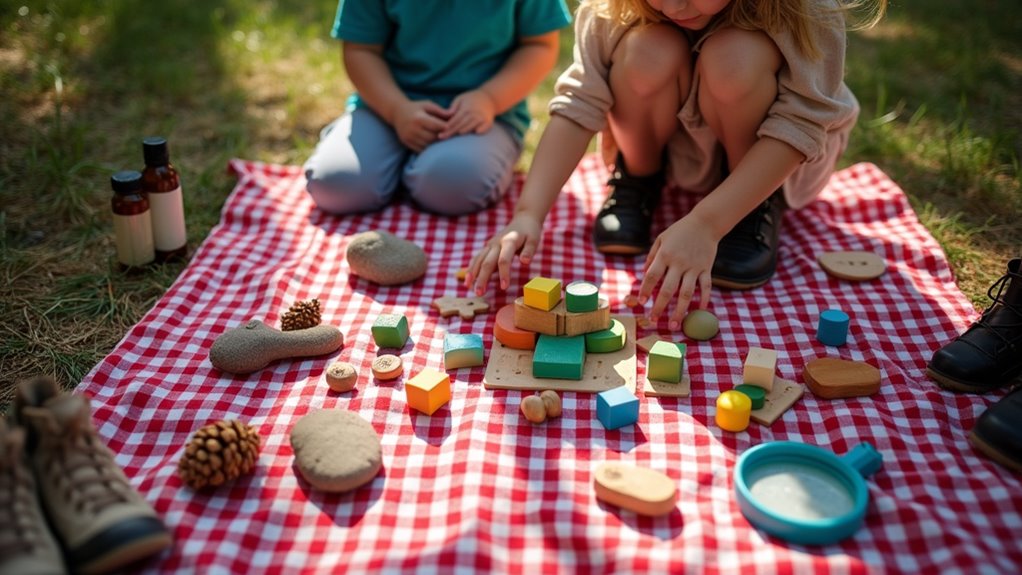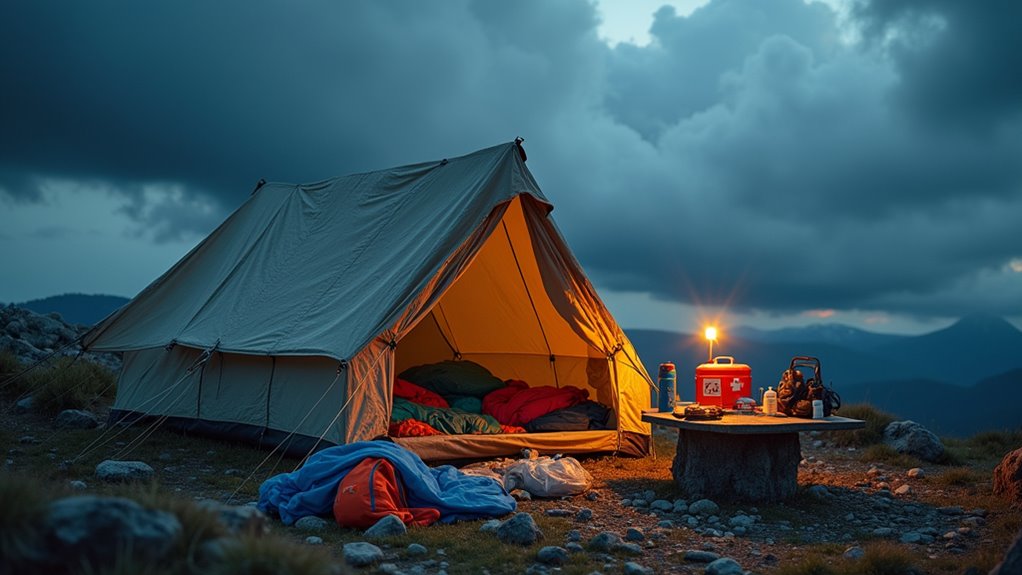Physical Address
304 North Cardinal St.
Dorchester Center, MA 02124
Physical Address
304 North Cardinal St.
Dorchester Center, MA 02124

New parents discover these 6 game-changing camping tips that turn chaotic family trips into adventures kids actually beg to repeat.
You’ve probably heard that camping with kids is more stressful than relaxing, but experienced family campers know there’s a secret to flipping that script. The truth is, successful family camping isn’t about luck or having naturally outdoorsy children—it’s about smart preparation and realistic expectations. When you apply the right strategies from day one, you’ll transform potential chaos into cherished memories that’ll have your kids begging for the next adventure.

When you’re introducing children to camping, your best strategy is to keep that first adventure close to home and brief. Choose a campground within an hour’s drive so you can easily return if things don’t go according to plan.
Start with just one night instead of a full weekend—this gives kids time to adjust without overwhelming them.
One night camping trips let children ease into the outdoor experience without feeling overwhelmed by extended time away from home.
Local trips also mean you’re familiar with the area’s amenities, weather patterns, and nearby medical facilities. You’ll spend less time driving and more time enjoying activities together. If you forget essential items, you can quickly retrieve them from home.
Short adventures build confidence for both you and your children. Success on these smaller trips creates positive memories and enthusiasm for longer camping experiences down the road. These memorable trips lay the foundation for a lifetime of family outdoor adventures.
After you’ve chosen your perfect nearby campground, your packing strategy can make or break the experience. Focus on essentials that’ll keep kids comfortable and entertained. Pack extra clothes—muddy adventures are inevitable. Bring familiar comfort items like favorite blankets or stuffed animals to ease bedtime shifts.
Don’t forget practical necessities: wet wipes, hand sanitizer, and a well-stocked first aid kit. Include kid-friendly snacks they actually enjoy, plus camping classics like s’mores ingredients. Pack lightweight entertainment—coloring books, card games, or glow sticks for evening fun.
Create a dedicated bag for each child with their personal items clearly labeled. This teaches responsibility while preventing lost belongings. Remember, you’re not moving permanently—prioritize items that serve multiple purposes and truly enhance your family’s outdoor experience. Be mindful of items to avoid bringing, as certain unnecessary or problematic gear can create safety hazards or add unwanted bulk to your family camping adventure.

Since boredom can quickly turn a magical camping trip into a meltdown marathon, having age-appropriate activities ready becomes your secret weapon for family harmony.
Boredom is the fastest way to transform your dream family camping adventure into a complete disaster zone.
For toddlers, pack bubbles, sidewalk chalk, and simple nature scavenger hunts featuring big items like rocks and leaves.
Elementary-aged kids love treasure hunts, card games, and junior ranger programs offered at many campgrounds.
Tweens and teens appreciate geocaching, photography challenges, and helping with camp setup responsibilities.
Don’t forget backup indoor activities for rainy weather—travel-sized board games, coloring books, and tablets loaded with downloaded content work wonders.
Plan one structured activity per day but leave plenty of free time for spontaneous exploration.
When nature calls, having camping toilets available can make the outdoor experience more comfortable for kids who might feel anxious about using unfamiliar facilities.
Before you even unpack your first bag, gather your kids for a safety briefing that’ll keep everyone secure and give you peace of mind throughout your trip.
Set clear boundaries about where they can explore and establish check-in times. Make these rules non-negotiable from the start – it’s much easier than trying to enforce them later when excitement takes over.
Cover these essential safety points:
Keep your tone positive but firm. Frame safety as part of the adventure, not restrictions that’ll ruin their fun.
If you’re camping during colder months, also teach kids about tent maintenance to prevent moisture buildup that could lead to uncomfortable or unsafe sleeping conditions.

Weather can shift from sunny skies to stormy conditions faster than you can say “s’mores,” so you’ll need backup plans that keep your family safe and comfortable. Pack rain gear for everyone, including waterproof jackets and extra socks. Bring layers since temperatures drop considerably at night, even during summer.
Create an emergency kit with first aid supplies, flashlights, batteries, and a weather radio.
Teach kids what to do during storms—stay in the tent or car, avoid tall trees, and remain calm. Download weather apps before you lose cell service and check forecasts regularly. Establish a meeting point if family members get separated.
Practice setting up your tent quickly so you’re ready when weather turns. Having these preparations in place transforms potential disasters into manageable inconveniences. Consider river rafting as an exciting outdoor activity that also teaches kids how to stay calm and follow safety instructions in dynamic weather conditions.
While packing the right gear keeps your family safe, building memorable traditions transforms ordinary camping trips into cherished family experiences that kids will treasure for years. Creating consistent rituals gives children something special to anticipate on every adventure.
Start simple traditions that’ll become family legends:
These traditions create structure, excitement, and lasting bonds that’ll make your kids camping enthusiasts for life. Beyond establishing rituals, having a variety of creative activities ready ensures kids stay engaged throughout the entire camping experience.
You’ve got the roadmap to camping success with your kids—now it’s time to hit the trail! Remember, every seasoned camper started as a beginner, and those first wobbly steps into the wilderness will soon become confident strides. Don’t let perfection be the enemy of adventure; embrace the chaos, celebrate the small victories, and watch as nature weaves its magic into your family’s story. Your next great outdoor memory is just one campfire away.